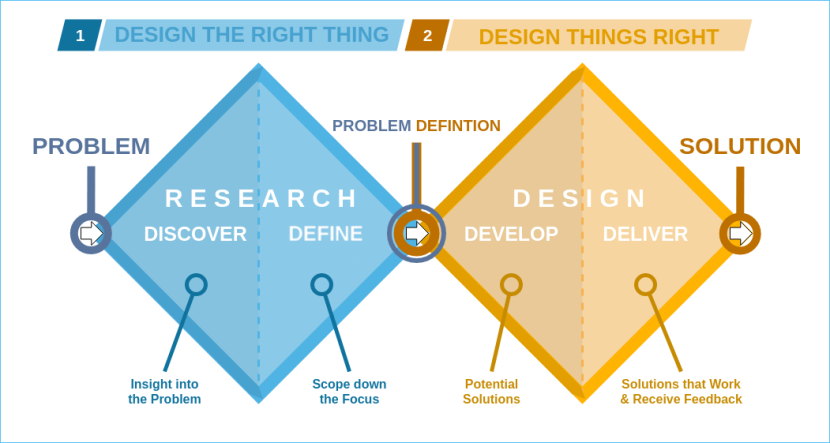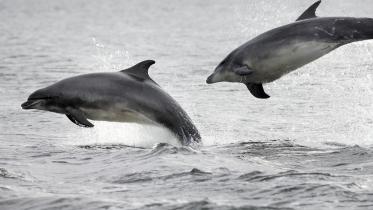30 by 30 and Nature Networks Co-design approach
The 30 by 30 and Nature Network Frameworks followed a co-design approach.
The 30x30 and Nature Networks projects followed a co-design approach to develop their frameworks. This highly collaborative process saw stakeholders from across Scotland work together to design the frameworks that will lead to us reaching 30% of land protected for nature by 2030 and the roll out of nature networks.
What is a co-design approach?
Co-design is when an organisation and stakeholders work together to design or rethink a service, policy or project.
Co-design goes beyond traditional stakeholder engagement. While consultation and feedback mechanisms seek advice and opinions from users, co-design allows us to design services in close collaboration.
By using a co-design approach, NatureScot looks to address challenges collaboratively, by working with one or more stakeholders in the private, public and voluntary sectors, and citizens. The core objective of co-design is to move away from consulting with stakeholders to co-creating services and policies with them. Co-design principles and methods can be applied throughout the whole project or programme. This can include collaboration in terms of the design, production, planning, implementation, delivery, and evaluation of services and policies.
Co-design principles
There are many ways in which co-design can be delivered and it is not one size fits all. There are a number of key principles that need to be followed to ensure co-design is enacted.
Some key principles include;
- Openness through inclusion, transparency, and use of shared language
- Equal value is given to expertise by lived experience and expertise by profession or education
- Respect and trust between all participants with shared decision-making power
How does co-design lead to better outcomes
The foundations of a successful co-design process lean on openness; through sharing and inclusion of a diverse and broad group of stakeholders, ensuring accessibility and transparency of the process, and establishing shared language.
These interrelated factors, build shared understanding and ensure participation on equal terms. This builds trust, which is vital for gaining genuine answers and uncovering the true needs of people and, in turn, leads to innovative ideas.
Stakeholder engagement in participatory activities, such as workshops, leads to commitment ensuring all who take part feel empowered and feel ownership of the co-design process. This commitment and ownership aid successful implementation and uptake of the co-created solution. Furthermore, the commitment throughout the process often makes it more efficient with active participants contributing more resources or capabilities. In turn, this leads to functional and sustainable results that serve the true needs of people and nature, and a likelihood of saved resources and reduced costs in the long term.
The co-design process leans on openness; through sharing and inclusion, ensuring accessibility and transparency, and establishing shared language. Shared understanding and participation on equal terms build trust, which is vital for gaining genuine answers and uncovering the true needs of people and, in turn, leads to innovative ideas. Engagement, commitment and ownership aids the successful implementation and uptake of the co-created solution as well as contributing more resources or capabilities. This leads to functioning results and saving resources.
Co-design model
The 30x30 and Nature Network projects used the Double Diamond design model to inform the co-design approach. The Double Diamond is a visual representation of the design and innovation process, dividing the process into four phases;
- Discover: explore the problem or challenge, building understanding amongst participants
- Define: clearly define the challenge
- Develop: explore and develop multiple potential solutions
- Deliver: selecting a single solution and preparing for implementation

Co-designing the 30 by 30 and Nature Network Frameworks
Discover phase
The Discover phase was launched with the first 30x30 and Nature Networks webinar at the end of June. This event brought together over 150 stakeholders wishing to input to the design of the 30x30 and Nature Network frameworks.
This first phase aimed to help people understand, rather than simply assume, what the challenge is, setting the scene by introducing the challenge, context, and parameters we are working within. Attendees were asked to start thinking creatively and ambitiously about what 30x30 and Nature Networks could look like. It is important to apply a participatory approach not only to problem-solving or idea-generating but also when defining the challenge to ensure we are uncovering and solving the “right” problem and true needs.
While the ‘challenge’ in this case has largely been defined by policy targets, including stakeholders early on in defining what the ask is, can alert the group to repercussions early on, help identify additional stakeholders, and build ownership amongst stakeholders. Without this stage, it can be easy to jump to the solutions too early, without a proper dialogue, which may not address the right challenge or address the challenges we are facing appropriately.
When asked in the initial opening event, the majority of stakeholders expressed interest in continuing to contribute to the project through workshops, therefore the primary method for this co-design process was through a series of workshops.
An event summary, along with recording and post-event input, is available.
Define phase
The closing of the Discover phase and beginning of the Define phase was hosted as a workshop on the 18 August 2022. This workshop brought together all interested parties again, this time delving deeper into the two projects separately to identify present challenges. This workshop continued to explore and define the challenges we wish for 30x30 and Nature Networks to address. This event brought together 120 people, from 92 organisations and groups, who were split into 13 different workshop groups to work on a joint conceptboard. Summaries and outputs of the workshops can be found at Nature Networks and at 30x30.
This exercise resulted in themes that smaller sub-groups took forward and worked to address.
Develop phase
The next stage in the co-design process, the Define and Develop phases, saw a total of 14 'solution-based' workshops held on these individual themes over October and November 2022.
The issues and challenges identified in the Discovery Workshops formed the themes and challenge questions that were used as the basis for discussion for both a set of 30x30 themed workshops and Nature Network themed workshops. These workshops discussed and decided what 30x30 and Nature Networks need to achieve to combat the current challenges and ensure we reach our ambitions. The principles decided by the co-creators in these workshops formed the basis of the frameworks.
Deliver phase
As Develop moved to Deliver, an iterative process took place, reviewing and refining the framework before it goes out to public consultation. Through the co-design process 30x30 and Nature Network sense-check groups reviewed and sense-checked the outputs of each phase.
The drafts of the frameworks were shared with the sense-check groups and co-designers before featuring in the going live.
The draft frameworks are now published and were consulted on in 2023 as part of the consultation on Scotland's Strategic Framework for Biodiversity.
You can find all previous events and associated documentation listed.



